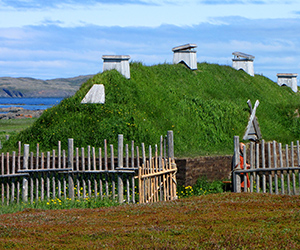CANADA HISTORY
Society

The society of New France was deeply rooted in the rhythms of rural life and the seigneurial system, which shaped the daily experiences of the habitants, or French farmers. Life for these inhabitants revolved primarily around the farm, their relationship with the land, and their local community, which was often their lifeline for support in this frontier society. While Quebec City and Montreal were bustling hubs of commerce and governance, the vast majority of New France’s population rarely ventured far from their farms. Visits to these settlements were infrequent and typically conducted for business purposes—such as purchasing much-needed supplies, selling produce, or managing legal affairs—but these trips were considered special occasions rather than routine events.
The inhabitants lived a largely self-sufficient life. Their farms provided most of what was necessary for their survival: food, shelter, and materials for clothing. Trade and barter with neighbors and within the seigneury allowed for the exchange of goods and services that supplemented what they could not produce themselves. Local markets and the church were central gathering points, facilitating social connections and reinforcing the sense of community that was vital for survival in such a vast and often unforgiving landscape. The seigneurial system, which tied the habitants to a seigneur who owned the land, created a network of mutual responsibilities and obligations that were crucial for maintaining order and productivity in the colony.
The Catholic Church played a pivotal role in the lives of the inhabitants. It was more than just a place of worship; the Church acted as a key institution for education, social welfare, and community cohesion. The clergy were often among the most educated members of society, and their influence extended beyond the spiritual realm. The Church's calendar dictated the rhythms of rural life, with religious festivals marking important moments in the year, and Sunday mass was a weekly obligation that brought people together. Priests were central figures who not only provided spiritual guidance but also played a role in maintaining moral order in the community.
Despite this seemingly settled and agricultural lifestyle, New France was, at its core, still a frontier society. It was surrounded by vast wilderness, and the threat of conflict with the Iroquois Confederacy and other Indigenous groups was a constant reality for many settlers. The frontier was both a source of danger and a place of opportunity, especially for young men who became involved in the fur trade. These coureurs de bois (runners of the woods) represented a romanticized elite within French Canadian culture. They ventured deep into the interior of North America, far from the settled farms and towns, to trade furs with Indigenous peoples. Their long and often dangerous expeditions required them to become skilled navigators of the rivers and forests, adopting aspects of Indigenous culture and ways of life to survive.
The coureurs de bois became legendary figures in New France, embodying a spirit of adventure, independence, and resilience. They defied the settled, agricultural world of the habitants, embracing instead the freedom and challenges of the wilderness. The fur trade, which was the economic backbone of New France, relied on their ability to traverse vast distances, build alliances with Indigenous nations, and bring back valuable pelts—especially beaver fur, which was highly prized in Europe. The fur trade linked New France to the global economy, and the success of the colony depended on the adventurous spirit of these young men.
However, this dynamic also created a cultural divide between the settled farmers of the St. Lawrence Valley and the coureurs de bois. While the habitants were bound to their land and their obligations to the seigneur, the fur traders lived in a world of mobility and exchange that often operated outside the rigid confines of colonial authority. This division highlighted the dual nature of French society in North America: one side firmly rooted in European traditions and the other shaped by the wilderness and Indigenous partnerships.
These contrasting lifestyles—the stable, agricultural world of the habitants and the exploratory, frontier life of the coureurs de bois—were mutually reinforcing, creating a unique blend of cultures in New France. The economic success of the colony depended on both groups: the habitants provided the food and resources necessary to sustain the population, while the fur traders brought in the wealth and trade connections that ensured the colony’s place in the global market. Over time, both groups contributed to the development of a distinct French Canadian identity, one that blended European traditions with the realities of life in the North American wilderness.
As New France expanded its influence further into Indigenous territories and along the Great Lakes, the inhabitants of the colony continued to balance their European heritage with the demands of frontier life. The development of local traditions, such as songs, festivals, and folk practices, reflected this unique synthesis of cultures. French settlers became increasingly self-reliant and developed a strong connection to the land, a bond that would endure even after the British conquest of 1763. The spirit of resilience and adaptation that defined early French settlers would continue to shape Canadian identity for centuries to come.
The society of New France revolved around a delicate balance between stability and exploration. The life of the habitants—grounded in farming, the seigneurial system, and the Catholic Church—was essential to the colony’s survival and its gradual development. At the same time, the fur trade, driven by the daring ventures of the coureurs de bois, ensured the colony's economic vitality and expanded French influence across the continent. Together, these forces contributed to the formation of a distinct French Canadian culture, one that remains a vital part of Canada's national identity today.
Cite Article : www.canadahistory.com/sections/documents




